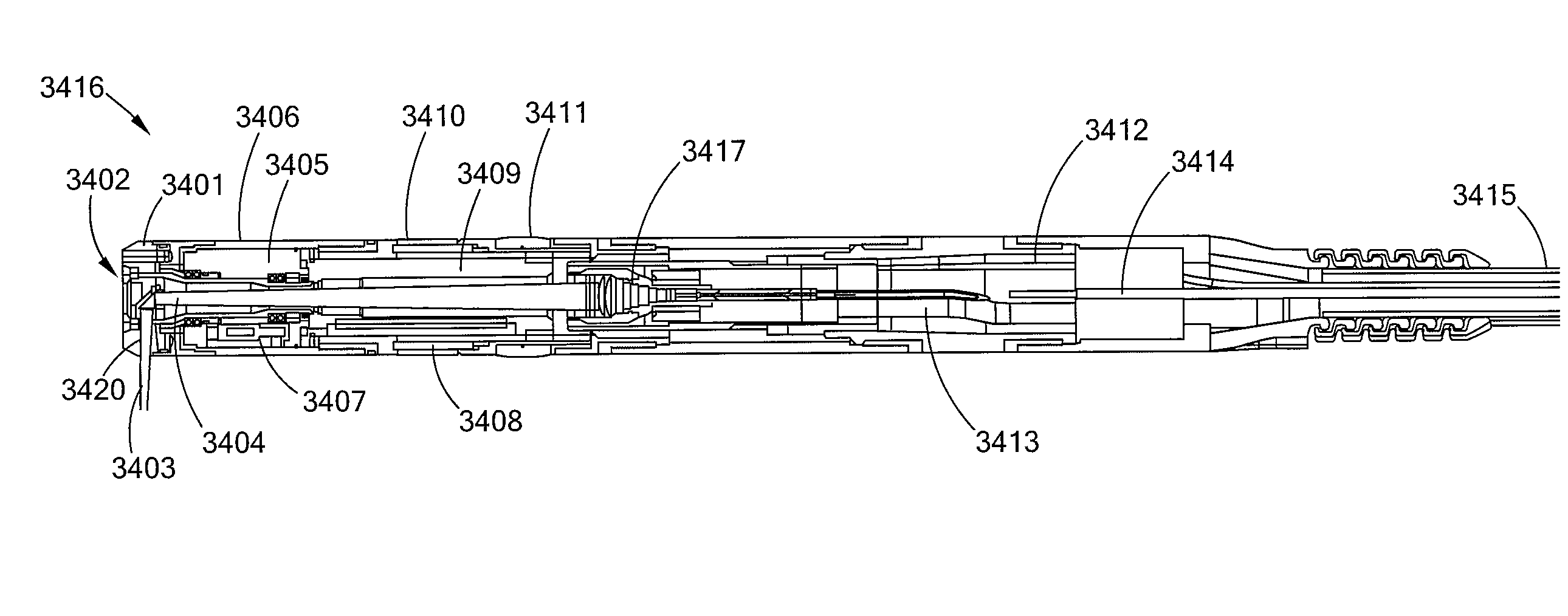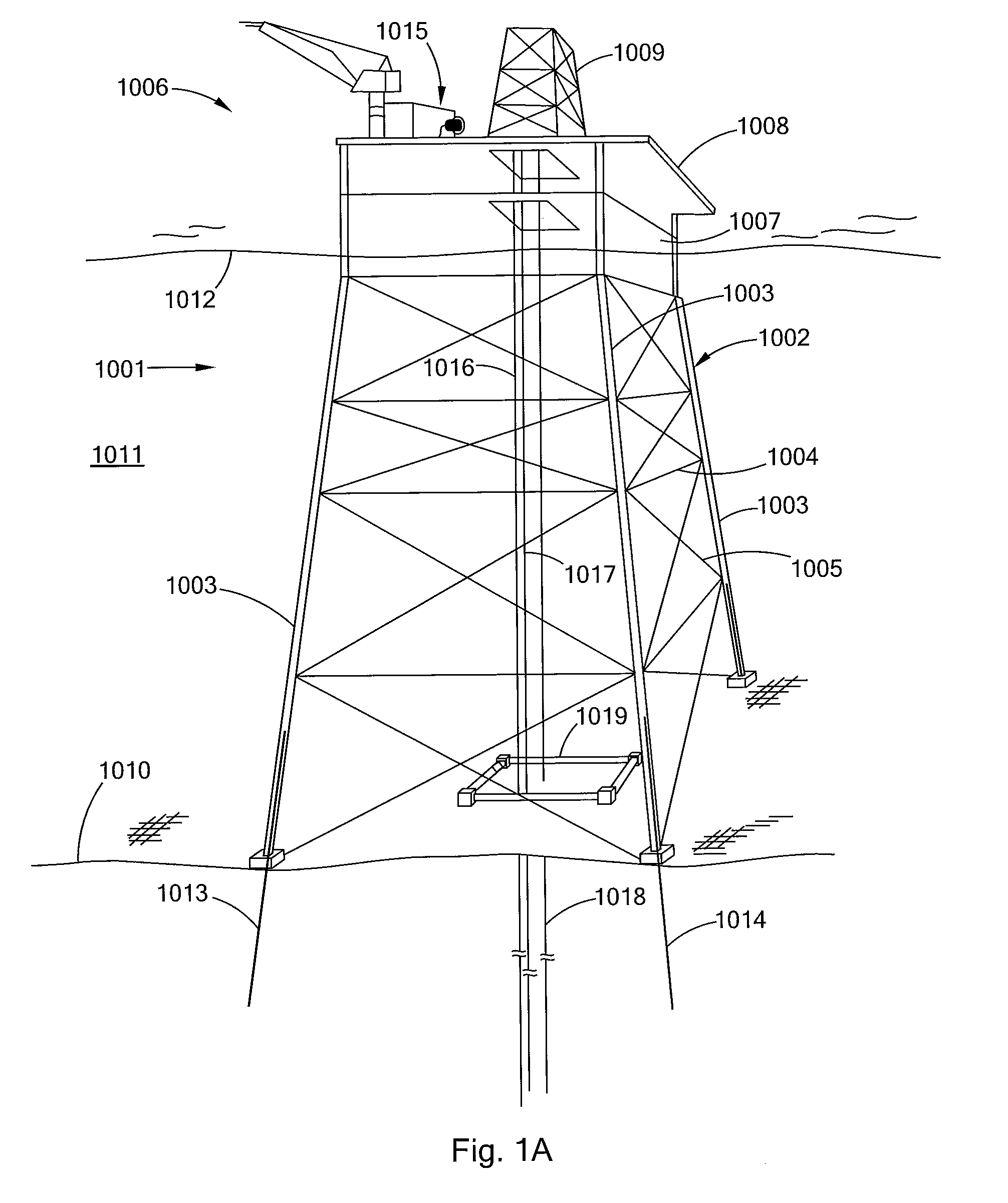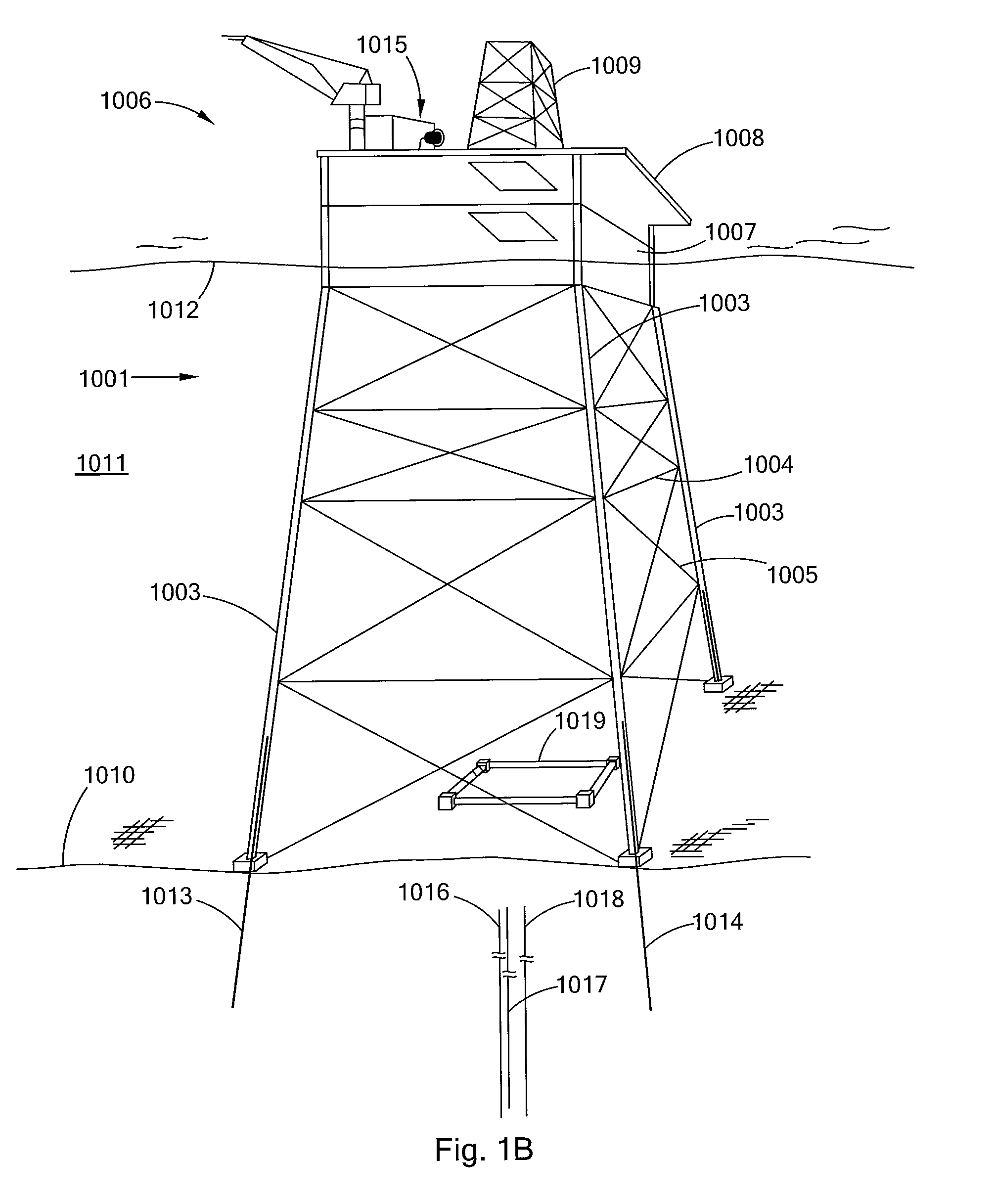Laser systems and methods for the removal of structures
a laser system and structure technology, applied in the direction of special purpose vessels, vessel construction, borehole/well accessories, etc., can solve the problems of complex and varied steps of plugging, abandoning and decommissioning, and no longer be economically producing hydrocarbons, etc., to achieve the effect of lessening the weight of the structur
- Summary
- Abstract
- Description
- Claims
- Application Information
AI Technical Summary
Benefits of technology
Problems solved by technology
Method used
Image
Examples
example 1
[0237]Biologic growth on a subsea structure can add considerable weight to that structure making it more difficult and costly to remove. Thus, a high power pulsed laser may be used to remove such biological growth from the structure before it is cut, or before it is lifted above the surface of the water. For example, a laser tool may be moved along the members of the structure by for example an ROV, or the laser tool may be positioned just below the surface of the water so that the biological material can be removed as the member is lifted from the water. In this manner, the hoisting device will have buoyancy of the water to assist in the lifting of the member below the surface of the body of water (which could a considerable distance) but not be burdened with this extra weight when as the member is removed from the water. Additionally, the cleaning of the sub-sea removed objects in many cases is a regulatory requirement. For example, in the California, there may be a requirement to...
example 2
[0239]In this example, there is provided a method of cutting through a conductor having multiple tubulars and annular areas. Thus, turning to FIG. 11 there is shown a configuration of tubulars 1101, having a conductor 1102, a first annulus 1105, an inner casing 1103, a second annulus 1106 and an internal casing 1104. The annuli 1105, 1106 may be open space, contain cement, a drilling fluid, or combinations and variations of these. The laser cutting tool 1107, has a gas jet laser cutting head of the type for example of the embodiment shown in FIG. 12, which directs a laser beam and gas jet along path 1108. The internal casing 1104 is cut using two, three, four or more passes of the laser to create an area of removed material 1104a. (Only the beginning of the cuts are shown in FIG. 11, it being understood that each of these cuts would preferably extend around the circumference of the casing and thus the removed material would be a ring) The inner casing 1103 is cut using fewer passes ...
example 3
[0240]In this example a laser removal system may be used to assist in the plugging abandonment and decommission of a subsea field. The field is associated with a floating spar platform. Two mobile containers are transported to the spar platform, containing a laser module, and a work container have laser cutting tools, devices, umbilicals and other support materials. The laser module obtains its power from the spar platform's power generators or supplied power generation. The laser cutting tools are lowered by the spars hoisting equipment, to the seafloor, where they are lowered into a first well that has been plugged, the laser tool directs a high power laser beam, having about 10 kW of power, in an air jet, around the interior of the well. The laser beam and jet in a single pass severs all of the tubulars in the well at about 15 feet below the mud line. This process is repeated for the remaining wells in the field that are to be abandoned.
PUM
| Property | Measurement | Unit |
|---|---|---|
| power | aaaaa | aaaaa |
| weight | aaaaa | aaaaa |
| weight | aaaaa | aaaaa |
Abstract
Description
Claims
Application Information
 Login to View More
Login to View More - R&D
- Intellectual Property
- Life Sciences
- Materials
- Tech Scout
- Unparalleled Data Quality
- Higher Quality Content
- 60% Fewer Hallucinations
Browse by: Latest US Patents, China's latest patents, Technical Efficacy Thesaurus, Application Domain, Technology Topic, Popular Technical Reports.
© 2025 PatSnap. All rights reserved.Legal|Privacy policy|Modern Slavery Act Transparency Statement|Sitemap|About US| Contact US: help@patsnap.com



